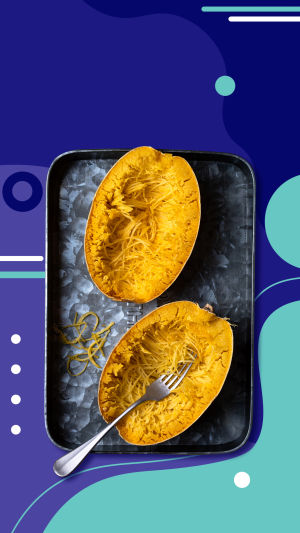Pumpkins are a type of Cucurbita, which is a species of annual trailing herb originally from Mexico to Central America. They've become widely cultivated around the world and are used in many recipes, decorations, and crafts.
Pumpkin is a healthy and nutritious food that can provide a range of vitamins and minerals, as well as dietary fibre. It also has antioxidant properties which can help to protect your cells from damage.
Pumpkin is rich in a variety of nutrients:
1. Polysaccharides. Pumpkin polysaccharide is a nonspecific immune enhancer. It can improve immune function and promote cytokine production. The immune system plays various regulatory functions through activating complements and other ways.
2. Carotenoids. Pumpkin-rich carotenoids in the body can be converted into an important physiological function of vitamin A. Therefore, it has important physiological functions for the growth and differentiation of epithelial tissues, maintaining normal vision, and promoting the development of bone.
3. Pectin. The pectin in pumpkin regulates the absorption rate of food in the stomach, slowing down the absorption of sugar. Soluble fibre can delay the emptying of food in the stomach and control the rise of blood sugar after meals. Pectin also binds to excess cholesterol in the body, reducing cholesterol absorption and lowering blood cholesterol concentration.
4. Mineral elements. Pumpkin is rich in cobalt, the amount of cobalt in all kinds of vegetables first. Cobalt can activate human metabolism, promote hematopoietic function, and participate in the synthesis of vitamin B12 in the human body, which is a necessary trace element for human islet cells. Pumpkin contains vitamin C which prevents nitrates from being turned into a carcinogen called nitrite in the digestive tract.
5. Amino acids. Pumpkin contains a variety of amino acids needed by the human body, including lysine, leucine, isoleucine, phenylalanine, threonine, and so on.
6. Pumpkin leaves. Contains a variety of vitamins and minerals, among which vitamin C content is very high so it has excellent clearing heat and detoxification effect.
Pumpkin is one of the earliest cultivated ancient crops. Some scholars thought pumpkins originated in southern Asia. Later, according to the archaeological data and the distribution of various resources, pumpkin was confirmed to originate in central and South America. Pumpkins have a long history of cultivation in Central America, with humans sharing the pumpkin as early as 8500 BC and humans cultivating it as early as 4050 BC.
At the Ocampo Caves in Mexico and Hausa in Peru. Excavations at the Pulpanta site have revealed that the earliest Chinese and Mexican pumpkin fragments existed between 5000 and 3000 BC. As for the only Indian pumpkin of origin in South America, it is found in Peru's St. At the Rio Hanas site, fragments of an Indian pumpkin were unearthed no earlier than 1800 BC.
There are many ways to eat pumpkins, and different countries have different cooking methods.
Soak the mung beans for three or four hours beforehand, peel and seed the squash and cut it into small pieces. Add pure water to mung beans boil, and then add the right amount of cold water into it, boil again and then add cold water, so repeated, mung beans are easy to boil and bloom. Of course, before the mung beans bloom, put the pumpkin to a boil, you can add rock sugar according to taste. When the mung beans bloom, pumpkin soft can be turned off the heat, cool after drinking taste better.
Steam the pumpkin until it is not hot (hot will kill the yeast) and add flour and yeast. Knead into a dough and separate into several pieces of the same size. Brush the pan with oil and cook the cut dough on low heat.
Pumpkins can also be made into pumpkin soups, desserts, and more.





